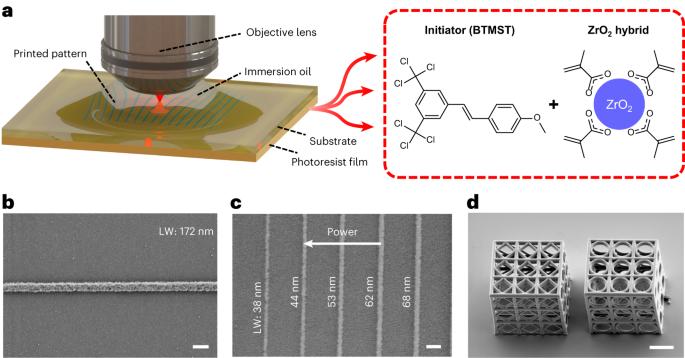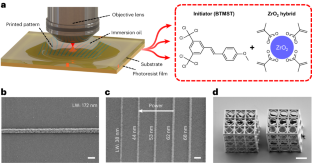Sensitive photoresists for high-speed two-photon lithography
IF 38.1
1区 材料科学
Q1 MATERIALS SCIENCE, MULTIDISCIPLINARY
引用次数: 0
Abstract
Two-photon lithography has advantages for precise additive manufacturing at the nanoscale, but its printing speed is currently too slow for large-scale practical applications. A sensitive photoresist based on zirconium oxide hybrid nanoparticles is shown to increase the linear printing speed of two-photon lithography up to the order of metres per second.


用于高速双光子光刻的敏感光刻胶。
双光子光刻技术在纳米级精确增材制造方面具有优势,但目前其打印速度太慢,无法进行大规模实际应用。研究表明,基于氧化锆混合纳米粒子的灵敏光刻胶可将双光子光刻技术的线性打印速度提高到每秒米级。
本文章由计算机程序翻译,如有差异,请以英文原文为准。
求助全文
约1分钟内获得全文
求助全文
来源期刊

Nature nanotechnology
工程技术-材料科学:综合
CiteScore
59.70
自引率
0.80%
发文量
196
审稿时长
4-8 weeks
期刊介绍:
Nature Nanotechnology is a prestigious journal that publishes high-quality papers in various areas of nanoscience and nanotechnology. The journal focuses on the design, characterization, and production of structures, devices, and systems that manipulate and control materials at atomic, molecular, and macromolecular scales. It encompasses both bottom-up and top-down approaches, as well as their combinations.
Furthermore, Nature Nanotechnology fosters the exchange of ideas among researchers from diverse disciplines such as chemistry, physics, material science, biomedical research, engineering, and more. It promotes collaboration at the forefront of this multidisciplinary field. The journal covers a wide range of topics, from fundamental research in physics, chemistry, and biology, including computational work and simulations, to the development of innovative devices and technologies for various industrial sectors such as information technology, medicine, manufacturing, high-performance materials, energy, and environmental technologies. It includes coverage of organic, inorganic, and hybrid materials.
 求助内容:
求助内容: 应助结果提醒方式:
应助结果提醒方式:


